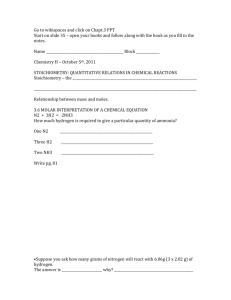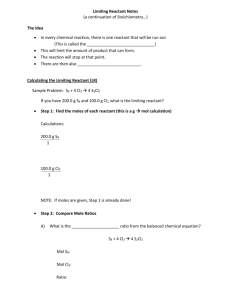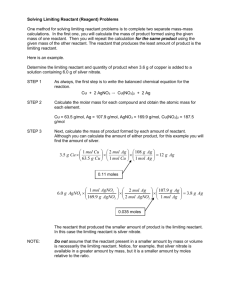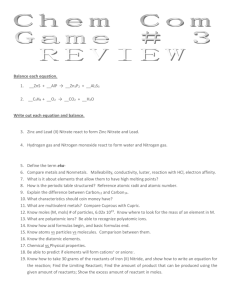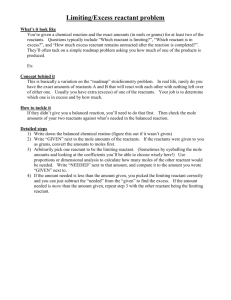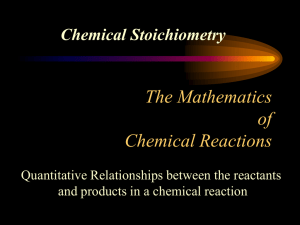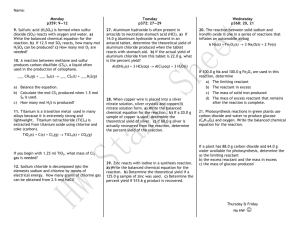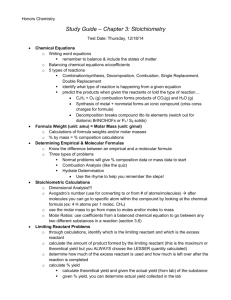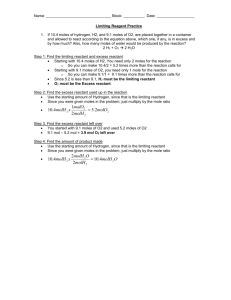Limiting and Excess Reactants Practice Wkst
advertisement
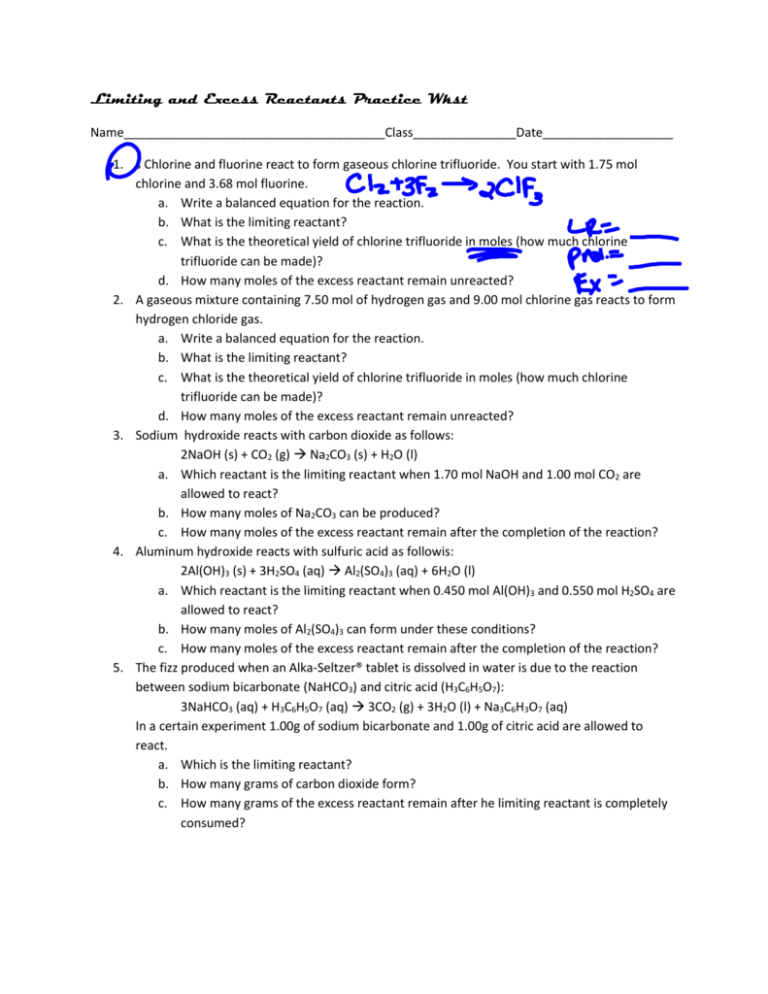
Limiting and Excess Reactants Practice Wkst Name______________________________________Class_______________Date___________________ 1. s Chlorine and fluorine react to form gaseous chlorine trifluoride. You start with 1.75 mol chlorine and 3.68 mol fluorine. a. Write a balanced equation for the reaction. b. What is the limiting reactant? c. What is the theoretical yield of chlorine trifluoride in moles (how much chlorine trifluoride can be made)? d. How many moles of the excess reactant remain unreacted? 2. A gaseous mixture containing 7.50 mol of hydrogen gas and 9.00 mol chlorine gas reacts to form hydrogen chloride gas. a. Write a balanced equation for the reaction. b. What is the limiting reactant? c. What is the theoretical yield of chlorine trifluoride in moles (how much chlorine trifluoride can be made)? d. How many moles of the excess reactant remain unreacted? 3. Sodium hydroxide reacts with carbon dioxide as follows: 2NaOH (s) + CO2 (g) Na2CO3 (s) + H2O (l) a. Which reactant is the limiting reactant when 1.70 mol NaOH and 1.00 mol CO2 are allowed to react? b. How many moles of Na2CO3 can be produced? c. How many moles of the excess reactant remain after the completion of the reaction? 4. Aluminum hydroxide reacts with sulfuric acid as followis: 2Al(OH)3 (s) + 3H2SO4 (aq) Al2(SO4)3 (aq) + 6H2O (l) a. Which reactant is the limiting reactant when 0.450 mol Al(OH)3 and 0.550 mol H2SO4 are allowed to react? b. How many moles of Al2(SO4)3 can form under these conditions? c. How many moles of the excess reactant remain after the completion of the reaction? 5. The fizz produced when an Alka-Seltzer® tablet is dissolved in water is due to the reaction between sodium bicarbonate (NaHCO3) and citric acid (H3C6H5O7): 3NaHCO3 (aq) + H3C6H5O7 (aq) 3CO2 (g) + 3H2O (l) + Na3C6H3O7 (aq) In a certain experiment 1.00g of sodium bicarbonate and 1.00g of citric acid are allowed to react. a. Which is the limiting reactant? b. How many grams of carbon dioxide form? c. How many grams of the excess reactant remain after he limiting reactant is completely consumed?

